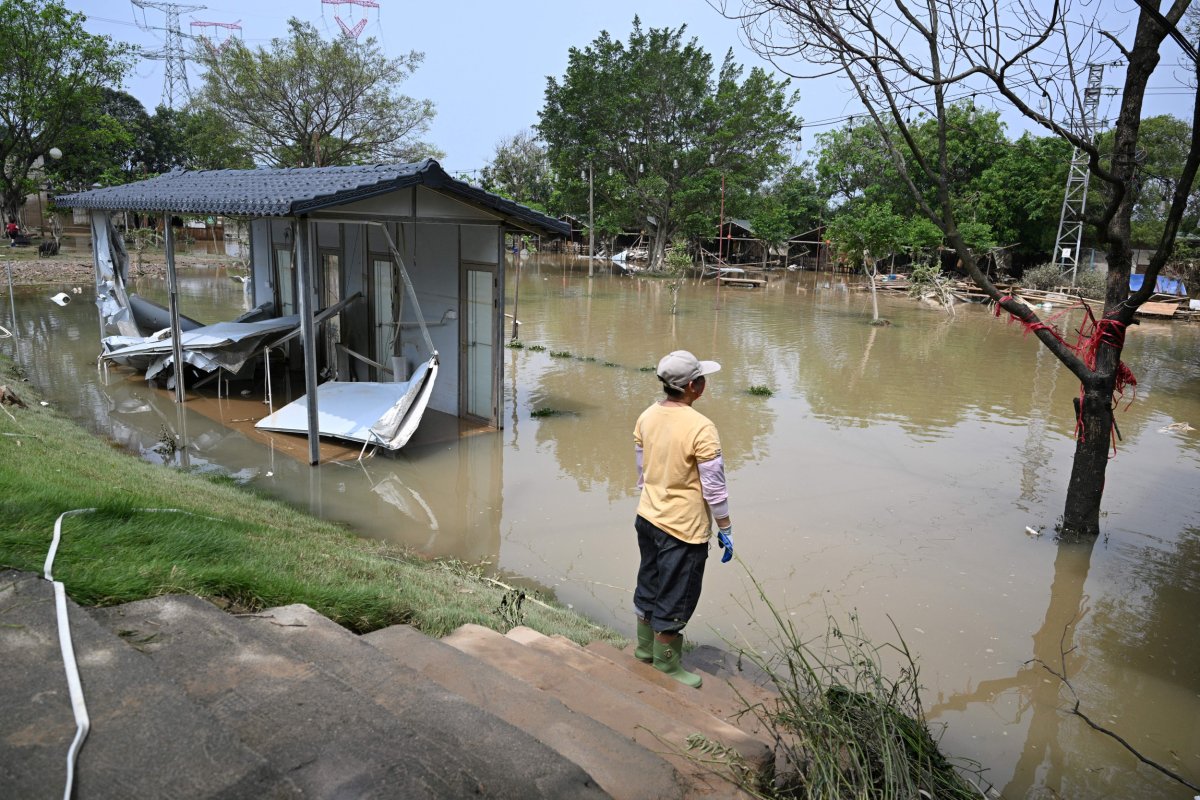Almost half of China's major cities face potentially devastating subsidence, raising the flood risk for tens of millions. A Newsweek map shows the fastest-sinking areas.
The threat is exacerbated by climate change accelerating sea level rises, and could potentially displace populations and destroy infrastructure if left unaddressed, experts warn.
The phenomenon of land subsidence is aggravated by excessive groundwater extraction and the sheer weight of sprawling cityscapes, as urban areas across China continue to expand.
The Newsweek map is based on a study published last week in Science journal, which revealed almost half of China's major cities are experiencing moderate to severe subsidence, using radar satellite imagery.
Over 920 million people, roughly two-thirds of China's population, now dwell in these urban areas.
Disasters linked to subsidence have already resulted in hundreds of deaths and injuries annually, with economic losses exceeding $1 billion as of 2014, according to the China Meteorological Administration (CMA).
Newsweek reached out to the CMA with a written request for comment.
Fissures caused by subsidence can cause severe damage to infrastructure but the heightened prospect of catastrophic flooding, particularly in coastal areas is perhaps the most daunting risk, especially as sea levels rise due to climate change.
"The world's gently sloping coastal plains, including China's, are in trouble," Orrin Pilkey, professor emeritus of geology and ocean sciences at Duke University's Nicholas School of the Environment, told Newsweek.
"Precise predictions are not possible, but I would expect 15 feet or more within a century from now with a maximum of 20 feet," he said, predicting enormous sea walls and sea gates at river mouths will likely be needed. "Certainly, a real future crisis is in store."
The Science study indicates that by 2120, 22 to 26 percent of China's coast could be below sea level, affecting 9 to 11 percent of the coastal population.

To combat these issues, a dual approach of mitigation and adaptation is needed, Robert Nicholls, University of East Anglia climate adaption professor and director of the Tyndall Centre for Climate Change Research, told Newsweek.
In cities like Tokyo and Osaka, for example, significant reductions in groundwater withdrawals have successfully slowed subsidence rates. Shanghai, too, has made strides in managing subsidence, though it continues at a reduced pace.
"If subsidence cannot be mitigated, adaptation is necessary. This means defense or retreat," Nicholls said.
He pointed out coastal areas in China and other countries suffering from subsidence already have dike systems in place. "We are talking about upgrades rather than new dikes, he said." Retreat or abandonment of land is possible but unlikely in China."
Uncommon Knowledge
Newsweek is committed to challenging conventional wisdom and finding connections in the search for common ground.
Newsweek is committed to challenging conventional wisdom and finding connections in the search for common ground.
About the writer
Micah McCartney is a reporter for Newsweek based in Taipei, Taiwan. He covers U.S.-China relations, East Asian and Southeast Asian ... Read more
To read how Newsweek uses AI as a newsroom tool, Click here.








